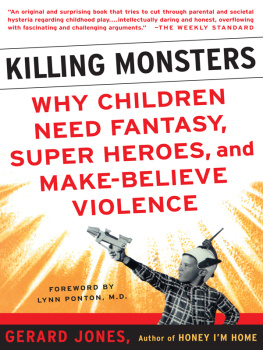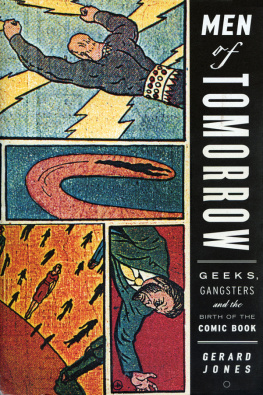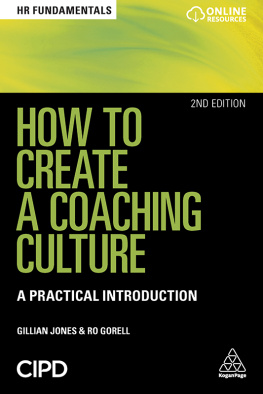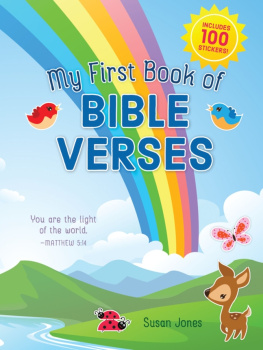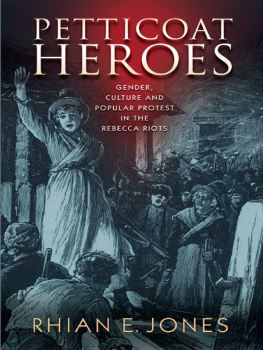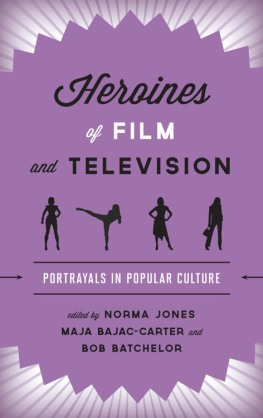Killing Monsters
Also by Gerard Jones
Honey, Im Home
The Comic Book Heroes (with Will Jacobs)
The Beaver Papers (with Will Jacobs)
Killing Monsters
Why Children Need Fantasy, Super Heroes, and Make-Believe Violence
Gerard Jones
Foreword by Dr. Lynn Ponton, M.D.
To my son,
Nicholas Jones,
hoping to give you a slightly saner world.
Copyright 2002 by Gerard Jones
Published by Basic Books,
A Member of the Perseus Books Group
All rights reserved. Printed in the United States of America. No part of this book may be reproduced in any manner whatsoever without written permission except in the case of brief quotations embodied in critical articles and reviews. For information, address Basic Books, 387 Park Avenue South, New York, NY 10016-8810.
Designed by Trish Wilkinson
The Library of Congress has cataloged the hardcover edition as follows:
Jones, Gerard.
Killing monsters : why children need fantasy, super heroes and make-believe violence / Gerard Jones.
p. cm.
Includes bibliographical references and index.
ISBN 0-465-03695-3
1. Mass media and children. 2. Fantasy in mass media. 3. Monsters in mass media. 4. Heroes in mass media. 5. Violence in mass media.
P94.5.C55 J66 2002
303.6'083--dc21
2001052667
ISBN 0-465-03696-1 (pbk.)
Foreword
Jonathan, a ten year-old boy clutching his favorite stuffed animal, a three-legged giraffe, cracks a toothless smile as he waves good-bye. He has just spent his afternoon killing people. During our hour together he has thrown hundreds of animals and soldiers from the upper tower of my toy castle, crashed a flying dragon so hard into its sturdy stone wall that a visible crack has appeared, and created a raging fire that has slaughtered all the people who were trying to save the others. He has said very little during this intense hour, only once breaking his silence when he whispered, Its a killing world, as a mother tried to save her newborn baby from the growing flames. This week, Jonathan has been only one of several children who blew up buildings, fired up blazes, and crashed airplanes. Jonathans therapy session with me, a child and adolescent psychiatrist, has taken place only three days after September 11, 2001.
Several months before, Jonathan had played violent games obsessively. His dad had tried to limit the activity, until I discovered that Jonathan was trying to cope with a bully at school. As he worked through that conflict, his violent play decreased. Then, after the 11th, it increased again dramatically. Jonathan told me that he was pretty scared after the terrorist activities. In fact, the only time that he wasnt scared was when he was playing scary gamesthen he felt okay.
Killing games gave Jonathan control over events where he and others felt none and, perhaps even more important, they gave him control over his own feelings. With these games Jonathan no longer felt as helpless. He was not as scared of others or of his own feelings.
As a psychiatrist, I see on a daily basis that frightening and violent ideas, images, and fantasies are vital parts of childrens minds. The images of September 11th fueled Jonathans fantasies and spurred his play, but they also helped him understand what had just happened in the world. Playing with violent images frightened but also soothed him, helping him feel strong enough to handle what had happened.
Killing games have much to tell us about the worlds of children and teenagers. It is important that we try to listen. Gerard Joness book, Killing Monsters, helps us do just that. Listen. And it is not easy to listen to the violent stories that fill the lives of our children. It is far easier to pretend that these themes either dont exist or should be completely eliminated.
What role do violent themes and entertainment play in childrens lives? What value do they have? In this powerful and important book, Jones helps us not only to listen but to ask the right questions. As a researcher of popular culture, a former comic book writer, a game maker, and equally important, a parent, he has listened to children and teens who love scary games and movies. He has run storytelling workshops with girls who idolize Buffy the Vampire Slayer and boys who play Doom. In Killing Monsters, he helps us discover the power and the magic that our children see in violent superheroes. He also helps us ask questions about the risks, the real risks. When do these games make our children more violent? Which children are at risk?
Andmost importantwhat, if anything, can and should be done about that risk?
Gerard Joness reassuring book offers all of usparents, teachers, policymakers, and media criticsnew ways to understand the challenges and rewards of fantasy violence in the modern imagination.
Lynn Ponton, M.D.,
Author of The Romance of Risk:
Why Teenagers Do the Things They Do
Acknowledgments
Ive been astonished and gratified at the eagerness of so many people within the educational, medical, psychological, entertainment, and parental communities to help me make this book a reality. Each one of those experiences has reminded me of how people of the most diverse and divided opinions can be brought together by passion for children, concern for the future, and the simple joy of trying to understand how people workand each one has reminded me of how a little empathy and honesty can knock down the greatest rhetorical and emotional barriers.
Among those who gave their time to increase my understanding were Dr. Mihaly Csikszentmihalyi of the Claremont Universities, Dr. William Damon of Stanford University, Dr. Lenore Terr of the University of CaliforniaSan Francisco, Dr. Ralph DiClementi of Emory University, Dr. Donald F. Roberts of Stanford University, Dr. Stuart Fischoff of California State UniversityLos Angeles, Dr. Jib Fowles of the University of Houston, Dr. Edwin H. Cook of the University of Chicago, Dr. Donna Mitroff of ABC Family, Dr. Helen Smith of ViolentKids. com, Dr. Roben Torosyan of New School University, and Dr. Rachel Lauer, the late chief psychologist of the New York City Schools.
Dr. Lynn Ponton of the University of CaliforniaSan Francisco, Dr. Carla Seal-Wanner of New York University and Dr. Nancy Marks were exceptionally generous in reading and critiquing chapters, as well as in sharing insights from their work and family lives. Dr. Melanie Moore gave me much help in the books earliest stages. Im also very grateful to the many clinical psychologists who shared with me their hard-viii won understandings of children, adolescents, and adults, particularly Diane Stern, Dr. Jonathon Gray, Christa Donaldson, Dr. Phyllis Shul-man, Dr. Valerie Hearn, Ilene Wolf, Susan Frankel, and Eric Stein; and to the many concerned parents whove brought me their experiences and insights, especially Heidi Anderson, Leslie Fetchen, Martha Thomases, Jean Blanc, Joe Filice, Susan Stapczynski, and Gina Weinberg. Thanks to the many teachers who let me into their classrooms and talked with me about their students, with special nods to Rebecca Field, Alice Hong, and the remarkable faculty of Live Oak School; and to those who shared their early experiences with entertainment and fantasy with me, particularly Sarah Holm, Ruben Diaz, Ray Portillo, Janice Cohen, Oscar Munoz, and Mary Cotter. All the stories in this book are true, although some of my sources have asked me to change names and sometimes a biographical detail or two in the interest of privacy. Most of all, Im grateful to the hundreds of kids and teenagers who have shared their stories, games, and fantasies with me over the past several years, both within and outside my formal workshops. Many of them asked me to use their real names; alas, out of respect to the schools, teachers, and other students Ive had to hew to a policy of anonymity regarding the workshops. I encourage them all to continue with the creative pursuits that will get their names into print in even more gratifying ways.

